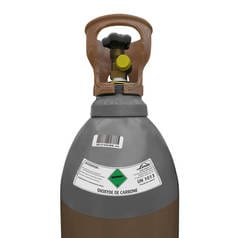Pour bénéficier d’un affichage optimal de la boutique en ligne de PanGas, vous avez besoin pour le navigateur de la version minimale suivante:
• Internet Explorer 9.0
• Mozilla Firefox 38
• Safari 8
• Chrome 45
Veuillez vous assurer que JavaScript est activé dans les paramètres de votre navigateur.
- Accueil
- Applications
- Analyse & Instrumentation
- Air Quality Monitoring
Air Quality Monitoring
International accords such as the Montreal protocol, or Kyoto accords call on all industry everywhere to monitor, control and reduce their emissions before discharging them into the environment. There are a number of different particulate and gaseous emissions which result from smoke stack emmissions in many industries including manufacturing, chemical and petrochemical, and power generation.
Areas of key measurement include:
- Carbon monoxide (CO) from industrial processes and incomplete combustion of wood, oil, gas and coal.
- Carbon dioxide (CO2) , Sulphur Dioxide (SO2), and Nitric oxides (NO and NO2) from combustion of gas, oil and coal.
- Hydrogen sulfide (H2S) and methyl mercaptan (CH3SH) from pulp and paper mills.
- Hydrocarbons resulting from incomplete combustion of fuels.
- ISO 3930 requirements for vehicle exhaust emission levels for carbon monoxide (CO), carbon dioxide (CO2), hydrocarbons (HC, in terms of n-hexane), and oxygen (O2)
Ambient air monitoring is accomplished in many ways. Air samples may be collected using sample bags or containers, and analysed using gas chromatography. Many facilities use Continuous Emission Monitoring systems (CEM) to measure specific pollutant emissions. For example, with the U.S. EPA CEMS have a requirement under some of the environmental regulations for either continual compliance determination, or determination of the level in which the facility is out of compliance with acceptable emission standards.
In all areas, a variety of environmental pure gases and calibration gas standards are required. Additionally, due to legislative, and/or legal requirements, many of these standards will need which need manufacturing to accreditation levels.




